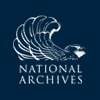Joshua J. Moore to Thomas Jefferson, 7 September 1805
From Joshua J. Moore
Washington 7h. September 1805.
Sir,
Having been informed of your Wish that a method should be devised for finding the Longitude of a Place without a Timepiece, the principal Datum of which should be a marked Meridian; I went into the Investigation nearly persuaded that the Problem could be solved in the precise manner originally suggested.—I find, however, that either I have not been able to seize on that View of the Subject which would lead to it; or that it cannot be so solved.
In the Attempt I was involved in a Difficulty which compelled me very laboriously to examine the Effects produced by almost every Element concerned in the Problem; in order to see which of them would best help me out. Each Conclusion commonly suggested other ways; & at length, after the rejection of three or four methods, I rested upon the one now submitted.
My Hope is that it may be useful, or give rise to other Solutions which will be so; and that it will be accepted as an Expression of my Desire to exert my portion of Faculties for the benefit of the Community.—
I am, Sir, With the utmost Respect, Your most obedient Servant,
Joshua J Moore.
RC (DLC); at foot of text: “Thomas Jefferson, Esquire”; endorsed by TJ as received 12 Sep. and so recorded in SJL. Enclosure: “To find the Longitude without a Timepiece,” a formal explication of a method using measurements by sextant of the apparent distance between the moon and the sun or between the moon and a star; the results of the sample problem, producing a longitude of 5 hours, 7 minutes, and 38 seconds west of Greenwich as the mean of three observations, come “sufficiently near” the results that would be obtained by “the usual mode of lunar distances,” as shown by results of observations made in 1804 at Moore’s house, “a small distance west of the President’s,” from which he calculated the longitude as 5 hours, 7 minutes, and 41 seconds (MS in same; in Moore’s hand; note by TJ on cover page: “by mr Moore”; endorsed by TJ: “Longitude” and “Moore’s method of Longitude”).
Joshua J. Moore (d. 1813) worked in the Treasury Department and was, at the time of his death, chief clerk in the land office. Besides his scientific interests, Moore wrote poetry that on at least one occasion was published by the National Intelligencer. He was also a member of the local Tammany Society and involved in Washington’s efforts to establish a public school system. TJ shared Moore’s theories on calculating longitude with Robert Patterson and William Dunbar, and he considered Moore an authority to be consulted when the government sought to survey the U.S. coastline in 1807 (National Intelligencer, 14 July 1806, 9 Aug. 1813; , 9 [1906], 116-17; Washington, D.C., Monitor, 18 Mch. 1809; , 6:334; 13:869; TJ to Patterson, 16 Nov.; TJ to Dunbar, 12 Jan. 1806).

![University of Virginia Press [link will open in a new window] University of Virginia Press](/lib/media/rotunda-white-on-blue.png)
